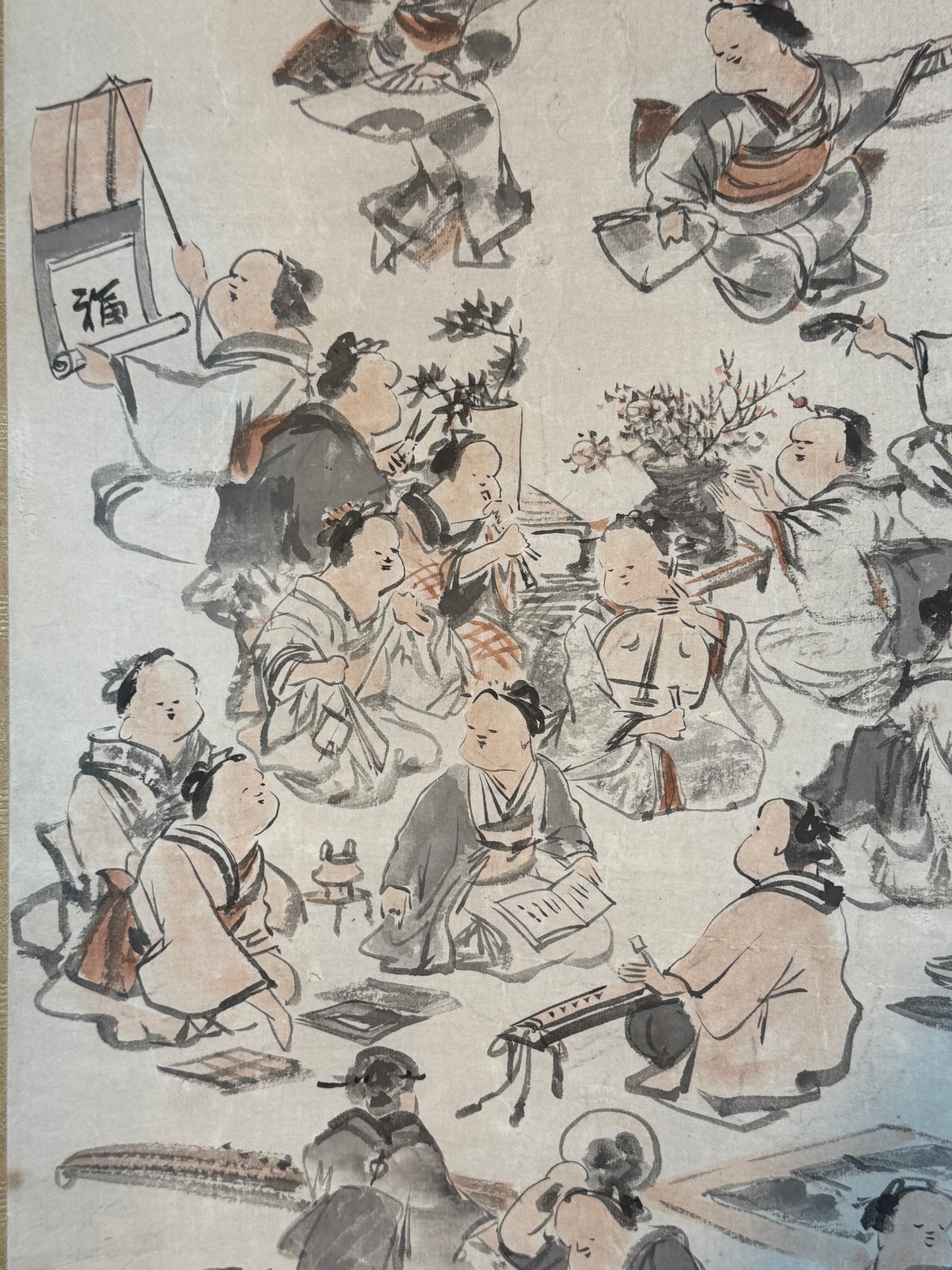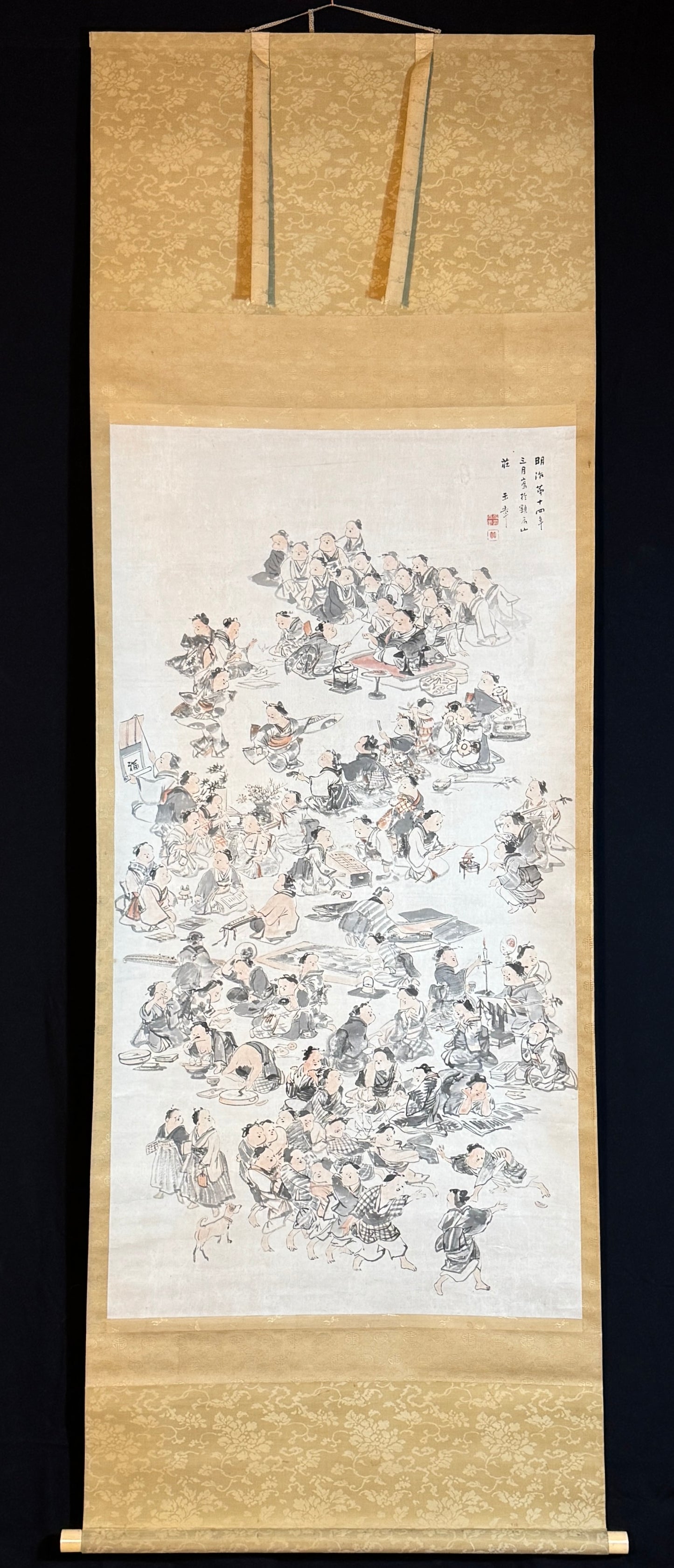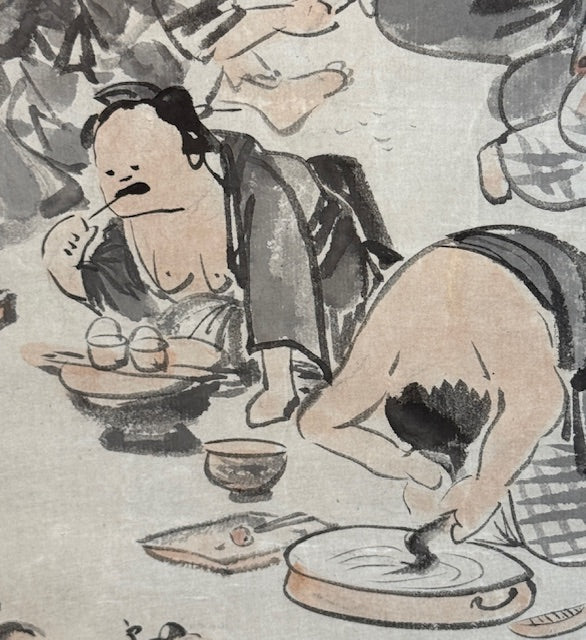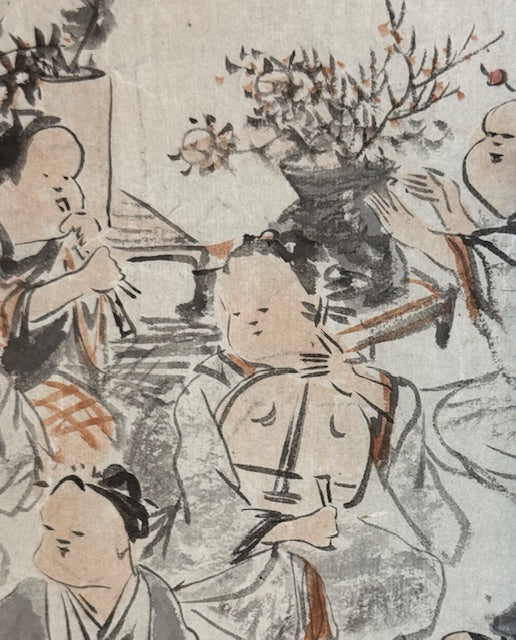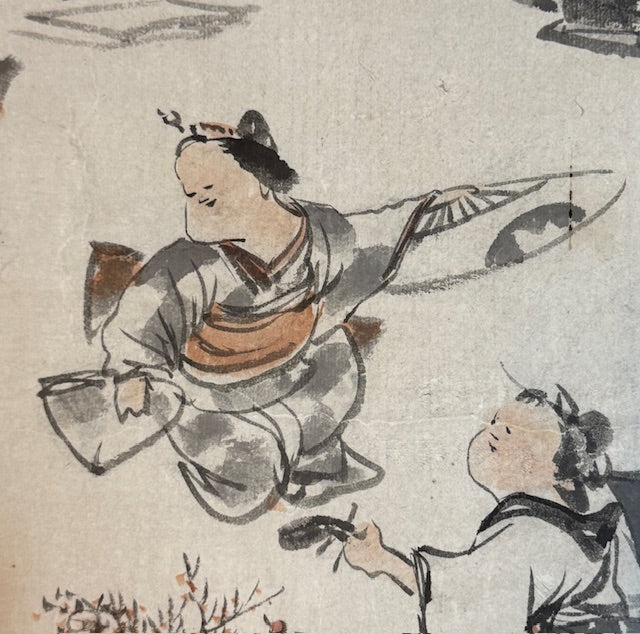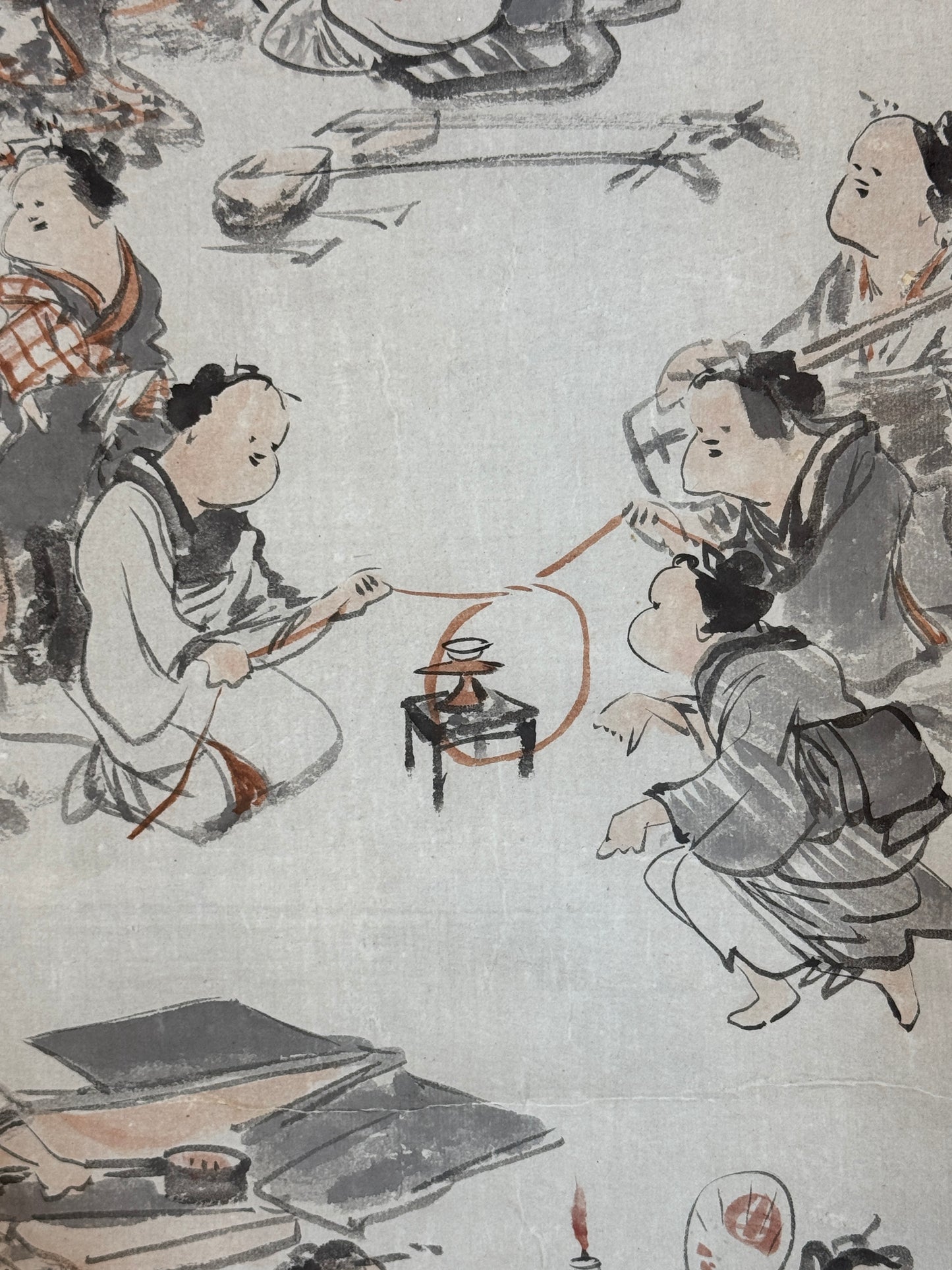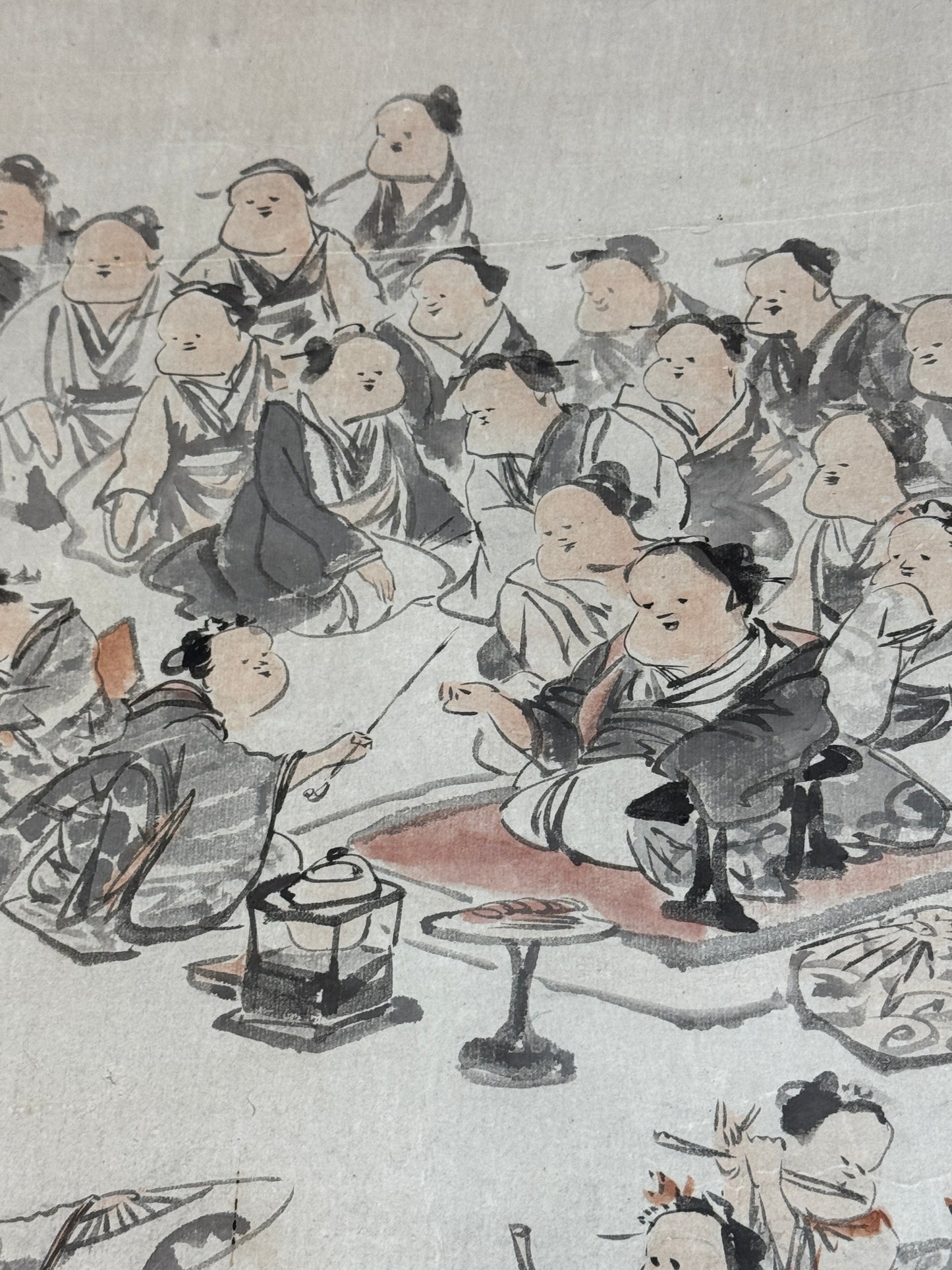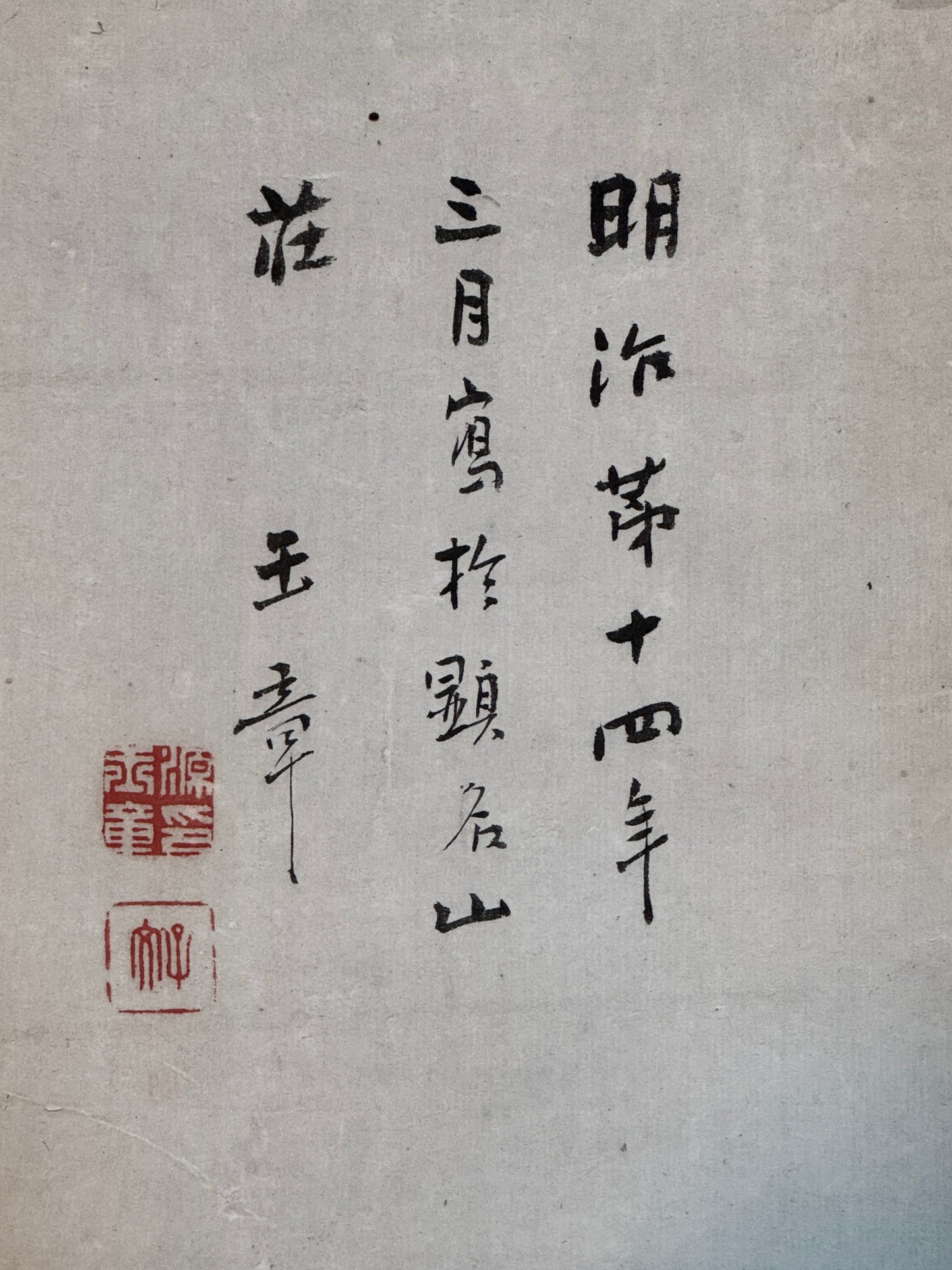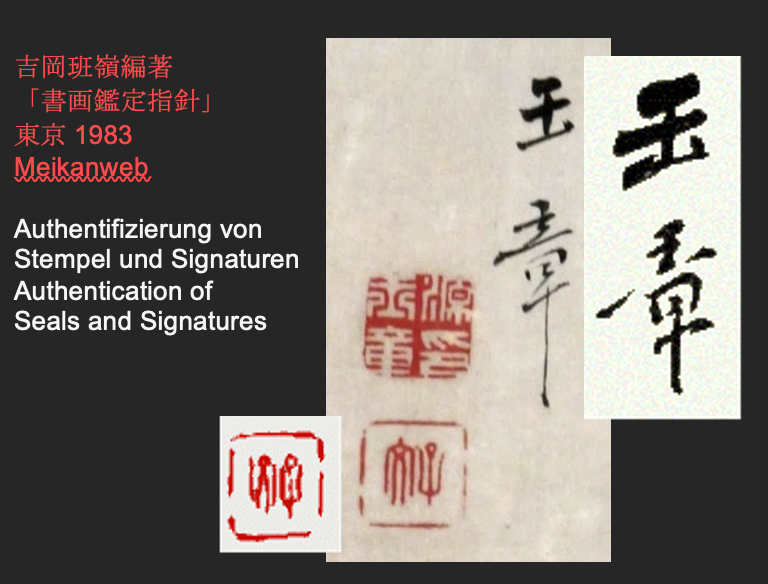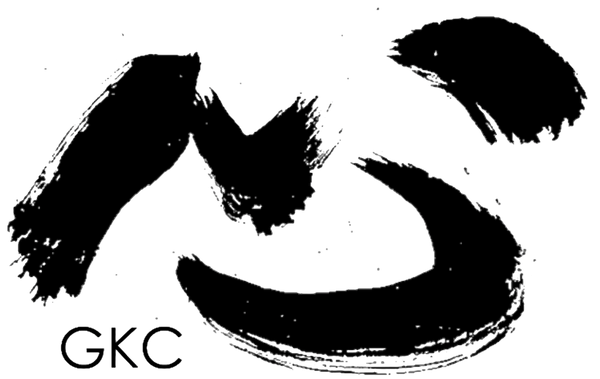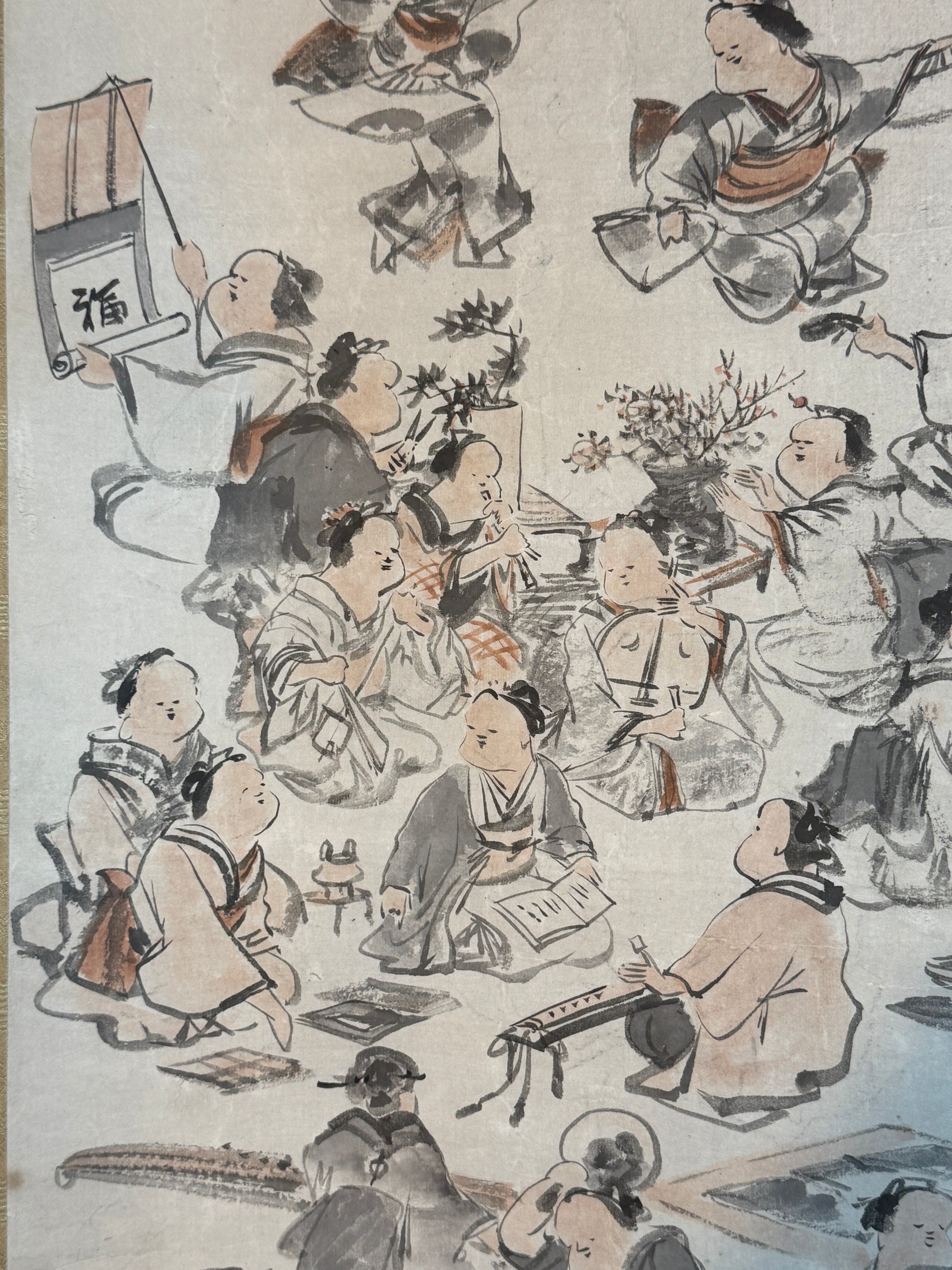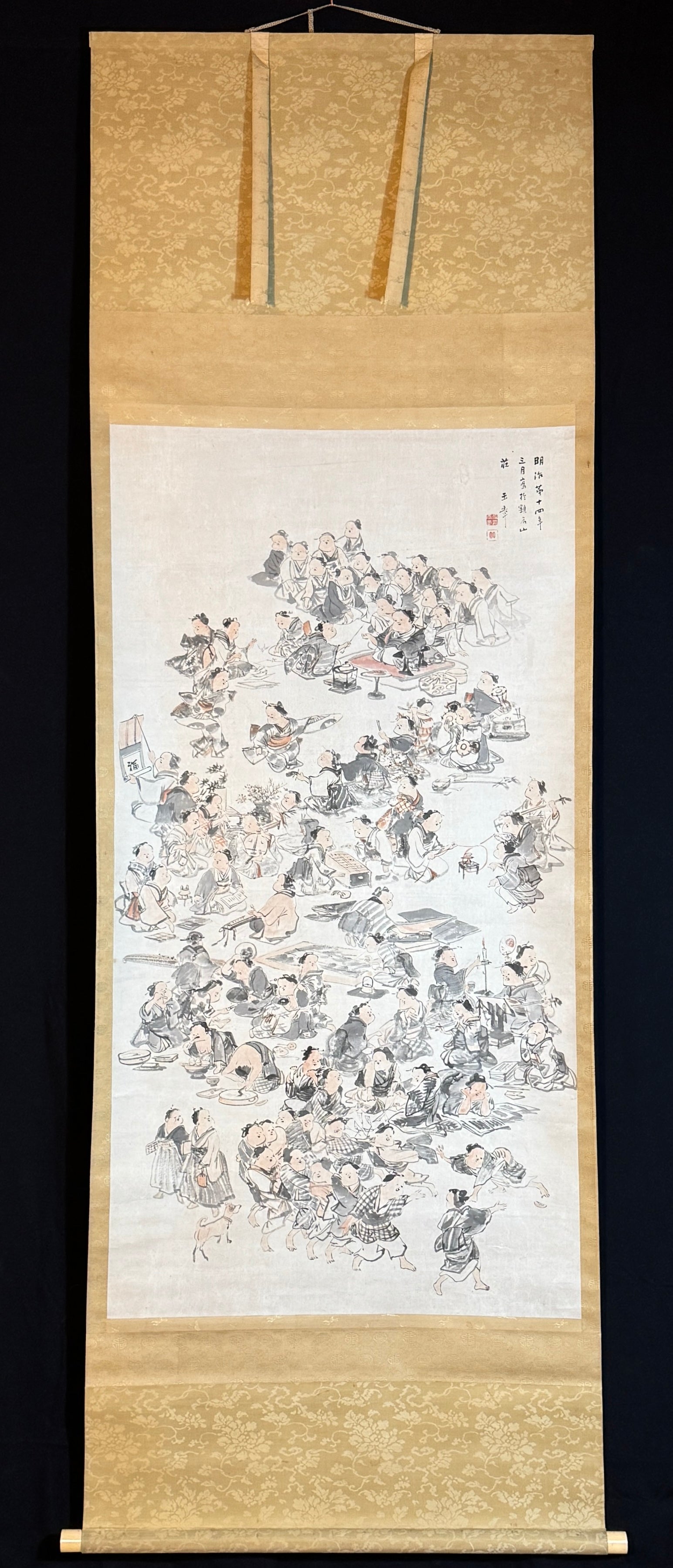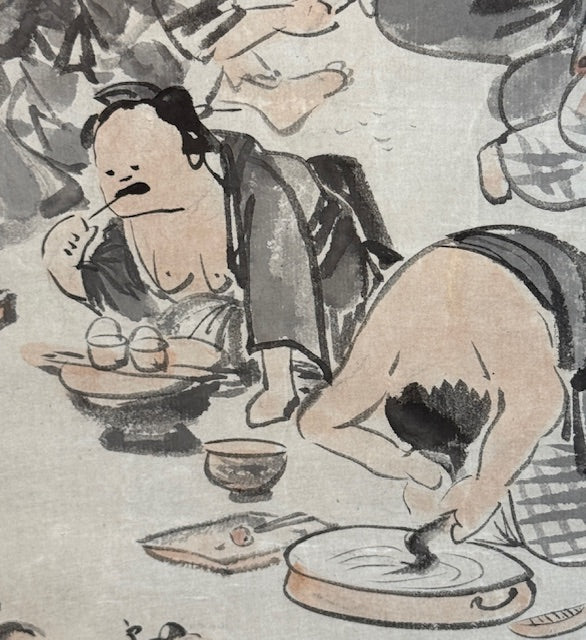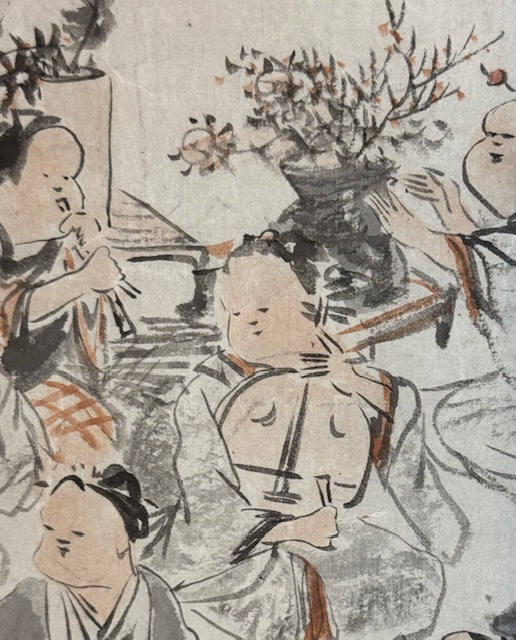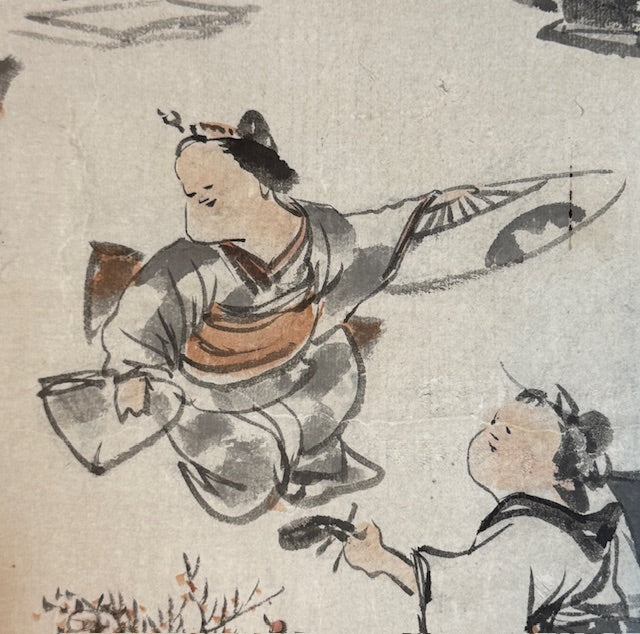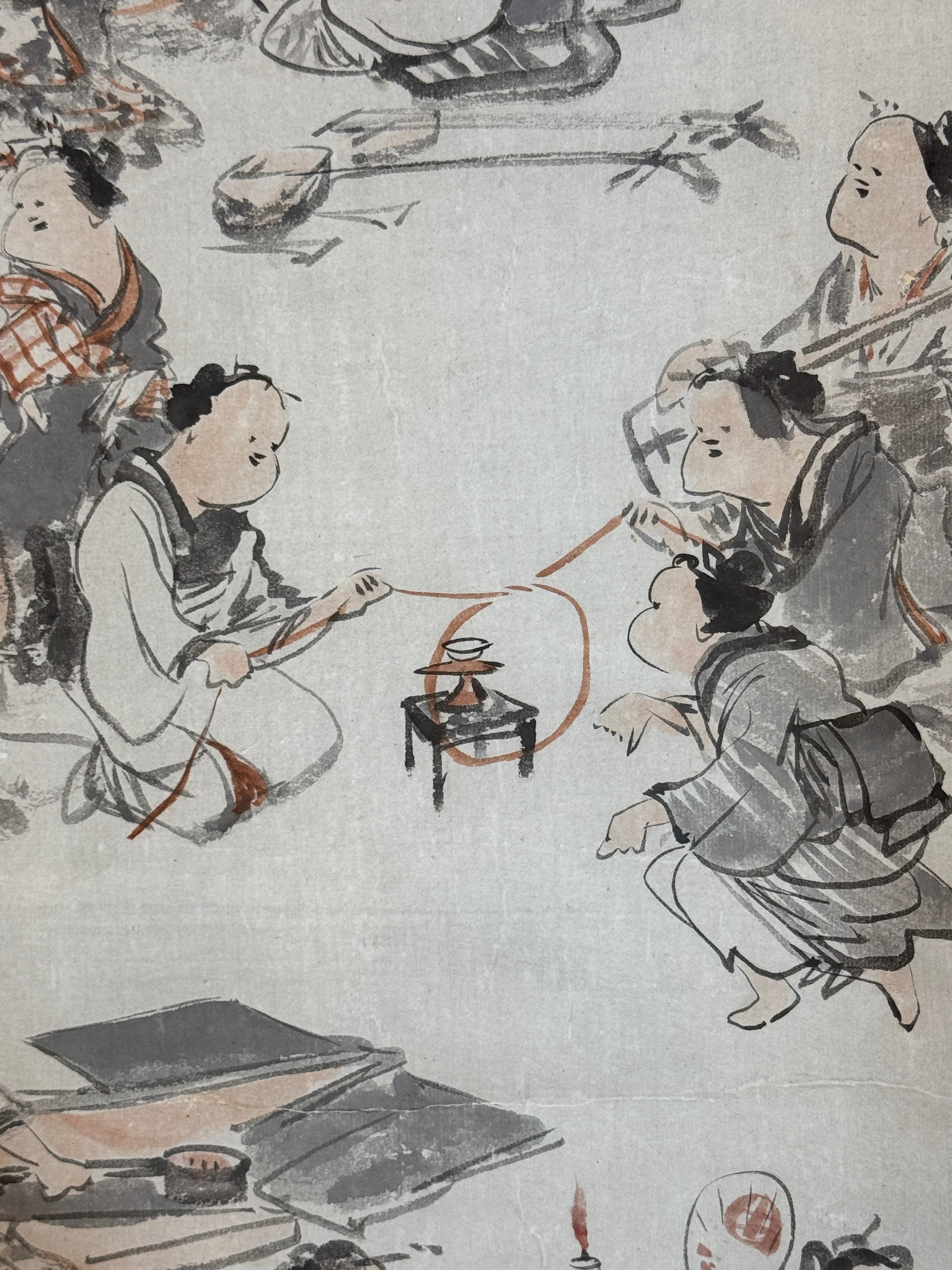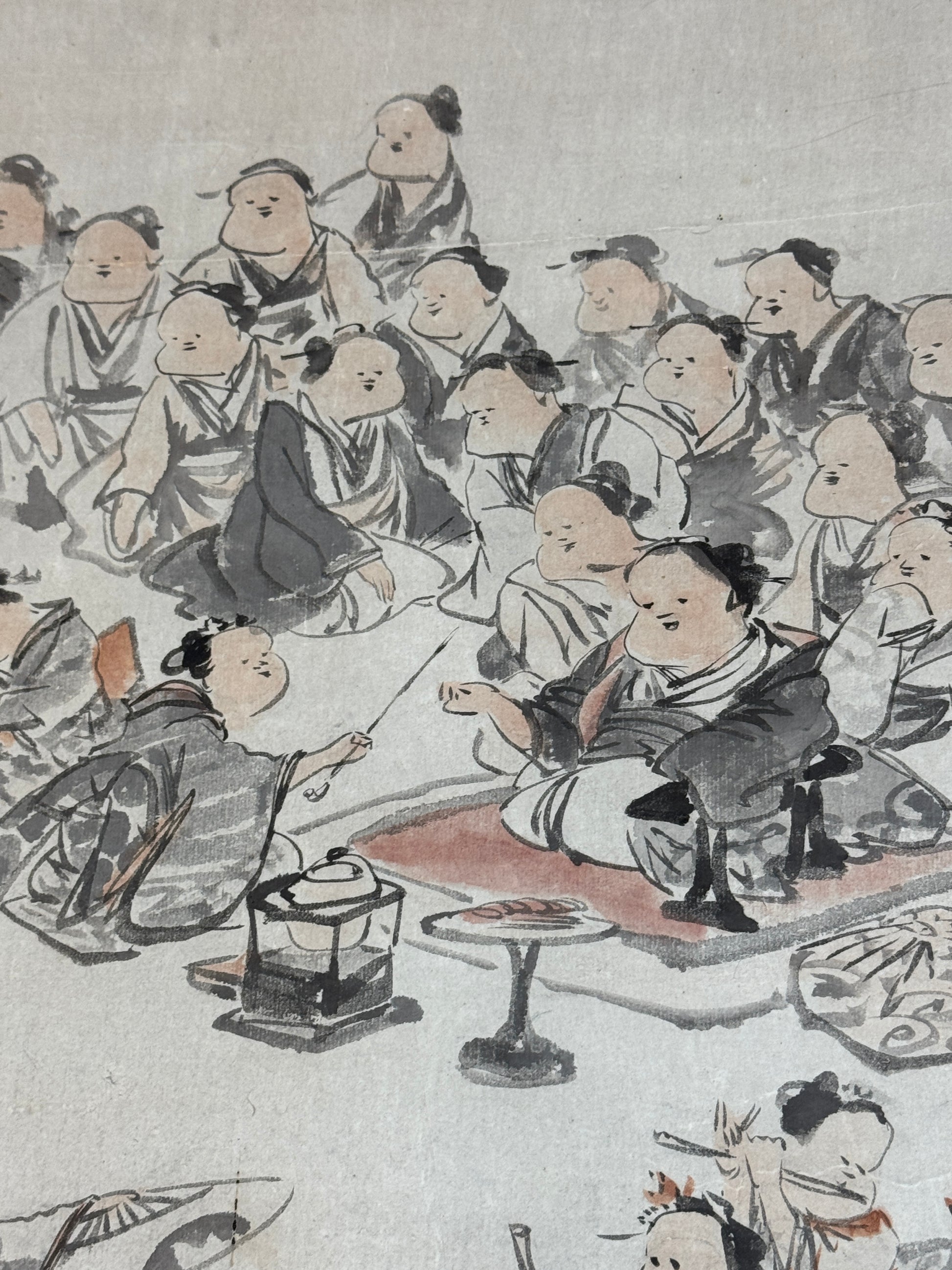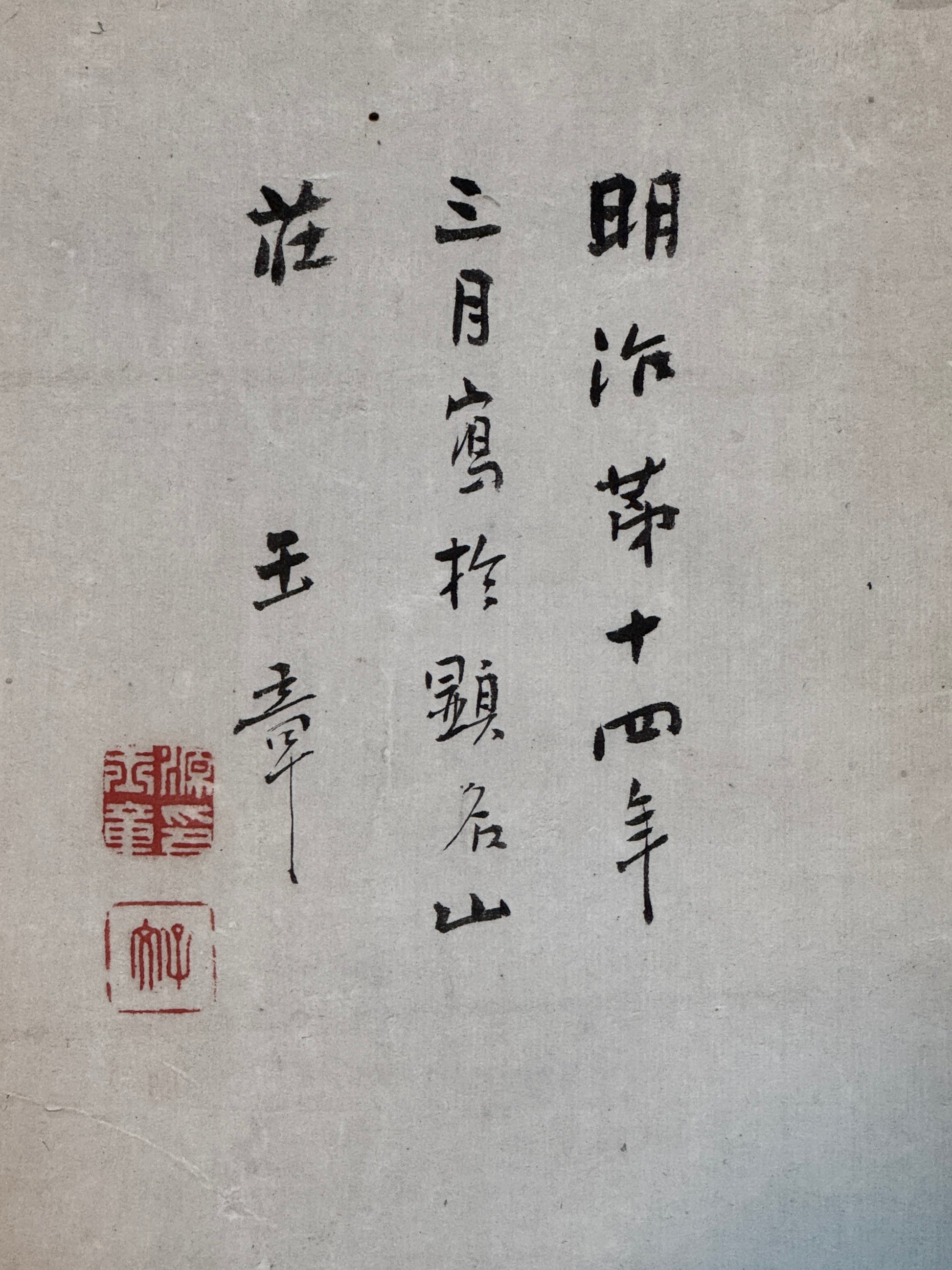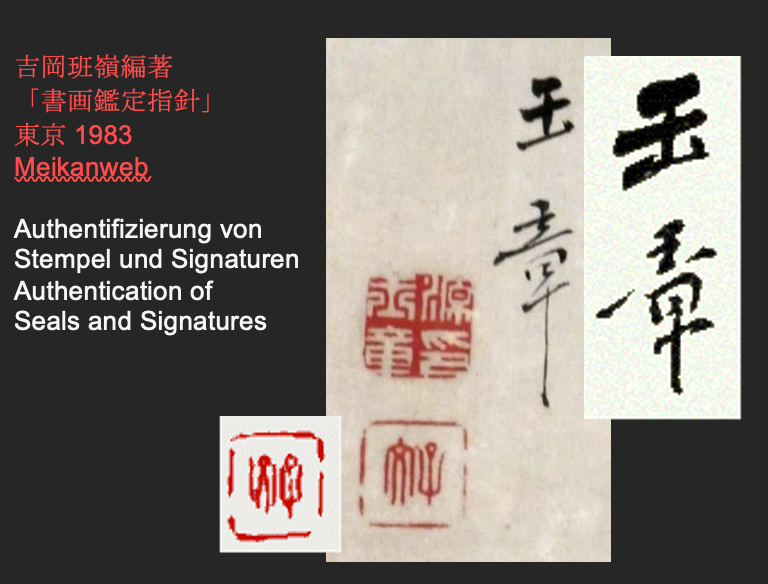Guignard Kyoto Collection
One hundred lucky women おたふく | Kawabata Gyokushō 川端玉章 | 1842-1913 (painted: March 1881)
One hundred lucky women おたふく | Kawabata Gyokushō 川端玉章 | 1842-1913 (painted: March 1881)
Couldn't load pickup availability
Kawabata Gyokushō was born in Kyoto, but earned merit when he spread the classic style of the Shijō school, which was based in Kyoto and set the tone, in Tokyo as a painter and teacher. He is considered the last great Shijō artist, and his place in modern Japanese art history is undisputed. The length of the scroll painting of 234 cm suggests that the painting was intended for a private owner who had (by Japanese living standards) grandiose rooms: only wealthy upper middle classes acquired art by Gyokushō.
Otafuku, lucky women, are not beauties that correspond to the modern ukiyo-e ideal of women (as created by woodcut artists in the 17th to 19th centuries) - with long, elegant limbs and oval faces. Otafuku are short-legged, fat, and have a pear-shaped head. What they lack in modern, classic Japanese feminine charm, they compensate for with warmth, comfort, and simplicity. In their (virtual) company - they are fantasy creatures - you feel comfortable, you don't have to make an effort as a man and play the sophisticated seducer, but can enjoy yourself carefree.
Hundreds of lucky charms are also known in the form of cranes or turtles; when it comes to otafuku, you are presented with a whole range of enjoyable distractions. If you look at the picture, you can discover countless wonderful narrative details. Nevertheless, the picture as a whole is generously constructed and convinces with its tamed fullness and a light, chatty brushstroke.
The picture is restored and in perfect condition.
